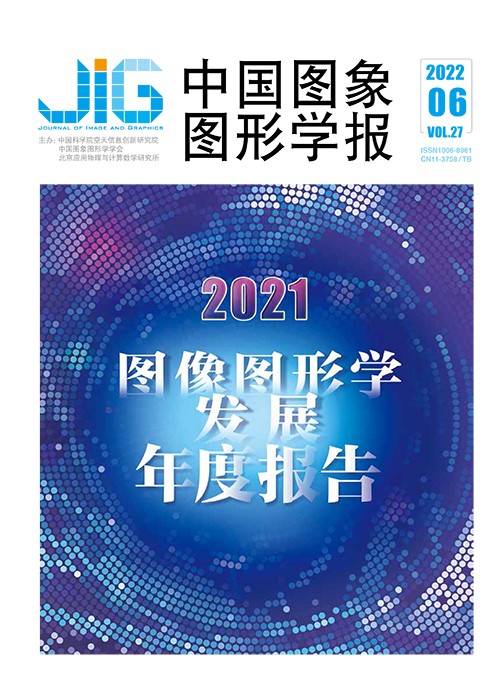
智能遥感:AI赋能遥感技术
孙显1,2, 孟瑜1,3, 刁文辉1,2, 黄丽佳1,2, 张新1,3, 骆剑承1,3, 高连如1,3, 王佩瑾1, 闫志远1, 郜丽静1, 董文1, 冯瑛超1,2, 李霁豪1,2, 付琨1,2(1.中国科学院空天信息创新研究院, 北京 100094;2.中国科学院大学, 北京 100101;3.中国科学院大学电子电气与通信工程学院, 北京 100190) 摘 要
随着人工智能的发展和落地应用,以地理空间大数据为基础,利用人工智能技术对遥感数据智能分析与解译成为未来发展趋势。本文以遥感数据转化过程中对观测对象的整体观测、分析解译与规律挖掘为主线,通过综合国内外文献和相关报道,梳理了该领域在遥感数据精准处理、遥感数据时空处理与分析、遥感目标要素分类识别、遥感数据关联挖掘以及遥感开源数据集和共享平台等方面的研究现状和进展。首先,针对遥感数据精准处理任务,从光学、合成孔径雷达等遥感数据成像质量提升和低质图像重建两个方面对精细化处理研究进展进行了回顾,并从遥感图像的局部特征匹配和区域特征匹配两个方面对定量化提升研究进展进行了回顾。其次,针对遥感数据时空处理与分析任务,从遥感影像时间序列修复和多源遥感时空融合两个方面对其研究进展进行了回顾。再次,针对遥感目标要素分类识别任务,从典型地物要素提取和多要素并行提取两个方面对其研究进展进行了回顾。最后,针对遥感数据关联挖掘任务,从数据组织关联、专业知识图谱构建两个方面对其研究进展进行了回顾。除此之外,面向大智能分析技术发展需求,本文还对遥感开源数据集和共享平台方面的研究进展进行了回顾。在此基础上,对遥感数据智能分析与解译的研究情况进行梳理、总结,给出了该领域的未来发展趋势与展望。
关键词
The review of AI-based intelligent remote sensing capabilities
Sun Xian1,2, Meng Yu1,3, Diao Wenhui1,2, Huang Lijia1,2, Zhang Xin1,3, Luo Jiancheng1,3, Gao Lianru1,3, Wang Peijin1, Yan Zhiyuan1, Gao Lijing1, Dong Wen1, Feng Yingchao1,2, Li Jihao1,2, Fu Kun1,2(1.Aerospace Information Research Institute, Chinese Academy of Sciences, Beijing 100094, China;2.University of Chinese Academy of Sciences, Beijing 100101, China;3.School of Electronic, Electrical and Communication Engineering, University of Chinese Academy of Sciences, Beijing 100190, China) Abstract
With the development and application of artificial intelligence, intelligent analysis and interpretation of big remotely sensed data using artificial intelligence technology has become a future development trend. By synthesizing domestic and foreign literature and related reports, it sorts out the fields of remote sensing data precision processing, remote sensing data spatio-temporal processing and analysis, remote sensing object classification and identification, remote sensing data association mining, remote sensing open source datasets and sharing platforms. Firstly, for the task of precise processing of remote sensing data, the purpose is to image process and calibrate the spectral reflection or radar scattering data obtained by the sensor, and restore them to image products accurately related to some information dimensions of ground objects. This paper reviews the research progress of refined processing from two aspects:the improvement of imaging quality of remote sensing data such as optics and SAR(synthetic aperture radar) and the reconstruction of low-quality images. The research progress of quantitative improvement is analyzed from two aspects:local feature matching and regional feature matching of remote sensing images. The exploration of existing technologies verifies the feasibility of high-precision remote sensing data processing through artificial intelligence technology. Secondly, for the task of spatio-temporal processing and analysis of remote sensing data, through the comprehensive analysis of multi temporal images, compared with single temporal remote sensing images, it can further show the dynamic changes of the earth's surface and reveal the evolution law of ground objects. For remote sensing applications of multi temporal images, such as monitoring of forest degradation, crop growth, urban expansion and wetland loss, the lack of data caused by clouds and their shadows will prolong the time interval of image acquisition, cause the problem of irregular time interval, and increase the difficulty of subsequent time series processing and analysis. This paper reviews its research progress from two aspects:remote sensing image time series restoration and multi-source remote sensing temporal and spatial fusion. Thirdly, for the task of remote sensing object classification and recognition, most of the existing processing and analysis methods do not make full use of the powerful autonomous learning ability of computers, rely on limited information acquisition and calculation methods, and are difficult to meet the performance requirements such as accuracy and false alarm rate. This paper reviews the research progress of typical feature element extraction and multi element parallel extraction. The existing technology explores how to combine artificial intelligence methods on the basis of traditional artificial mathematical analysis methods to quantitatively describe and analyze target models and mechanisms in remote sensing data to improve target interpretation accuracy. Finally, for the task of remote sensing data association mining, the research progress is reviewed from two aspects:data organization association and professional knowledge graph construction. It shows that there are still some problems in the field of remote sensing data, such as scattered application, difficult to form a knowledge graph and realize knowledge accumulation, updating and optimization. Based on massive multi-source heterogeneous remote sensing data, realizing the rapid association, organization and analysis of multi-dimensional information in time and space is an important direction in the future. In addition, facing the development needs of big intelligence analysis technology, this paper also reviews the research progress of remote sensing open source data set and sharing platform. On this basis, the research situation of intelligent analysis and interpretation of remote sensing data is combed and summarized, and the future development trend and prospect of this field are given.
Keywords
remote sensing big data data processing spatio-temporal processing and analysis target element classification and identification data association mining open source datasets sharing platform
|



 中国图象图形学报 │ 京ICP备05080539号-4 │ 本系统由
中国图象图形学报 │ 京ICP备05080539号-4 │ 本系统由